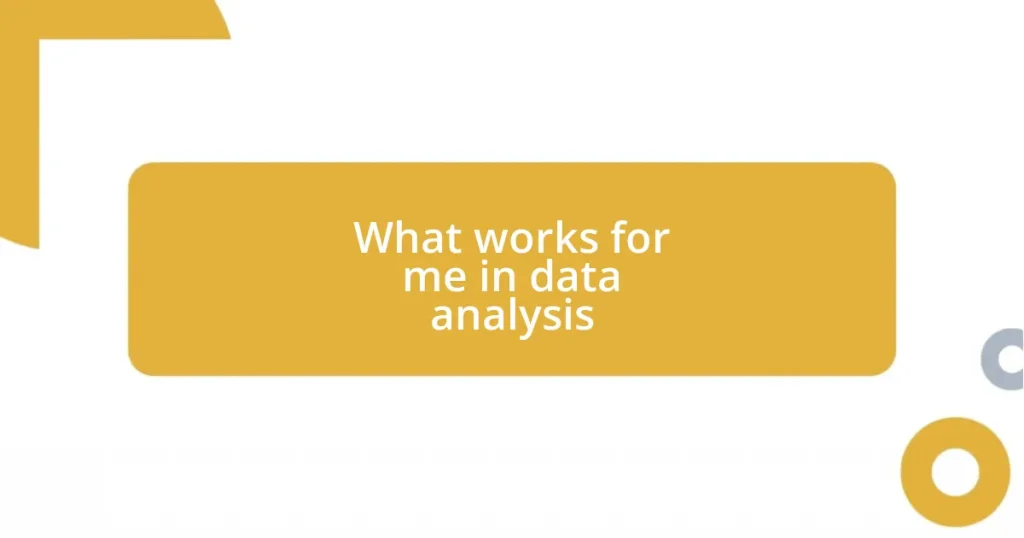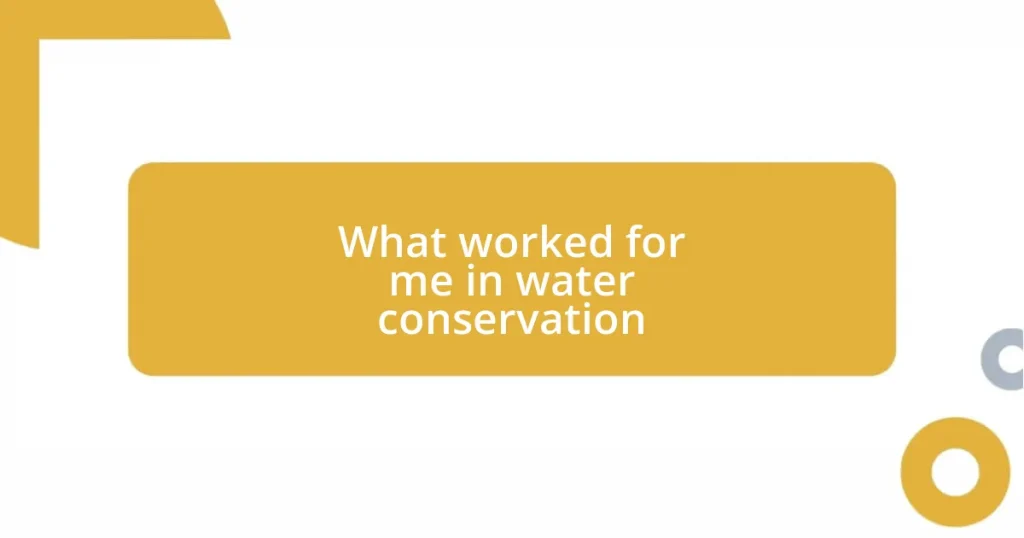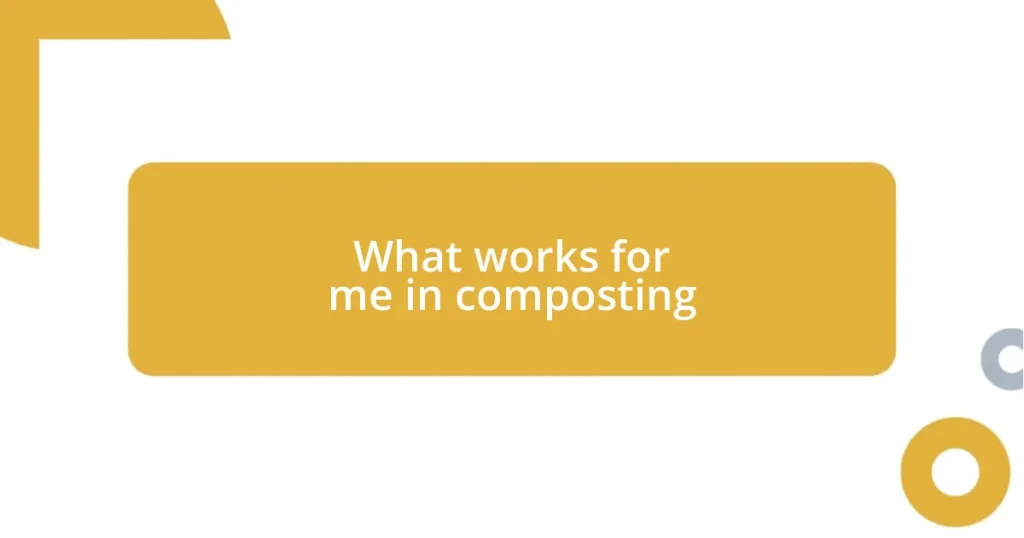Key takeaways:
- Understanding context is crucial in data analysis, as it reveals the story behind the numbers.
- Choosing the right tools and visualizations significantly impacts the clarity and effectiveness of your analysis.
- Collaboration with stakeholders enhances insights and aligns analysis with business objectives.
- Regular feedback loops refine analysis, fostering a culture of openness and improving the overall quality of work.
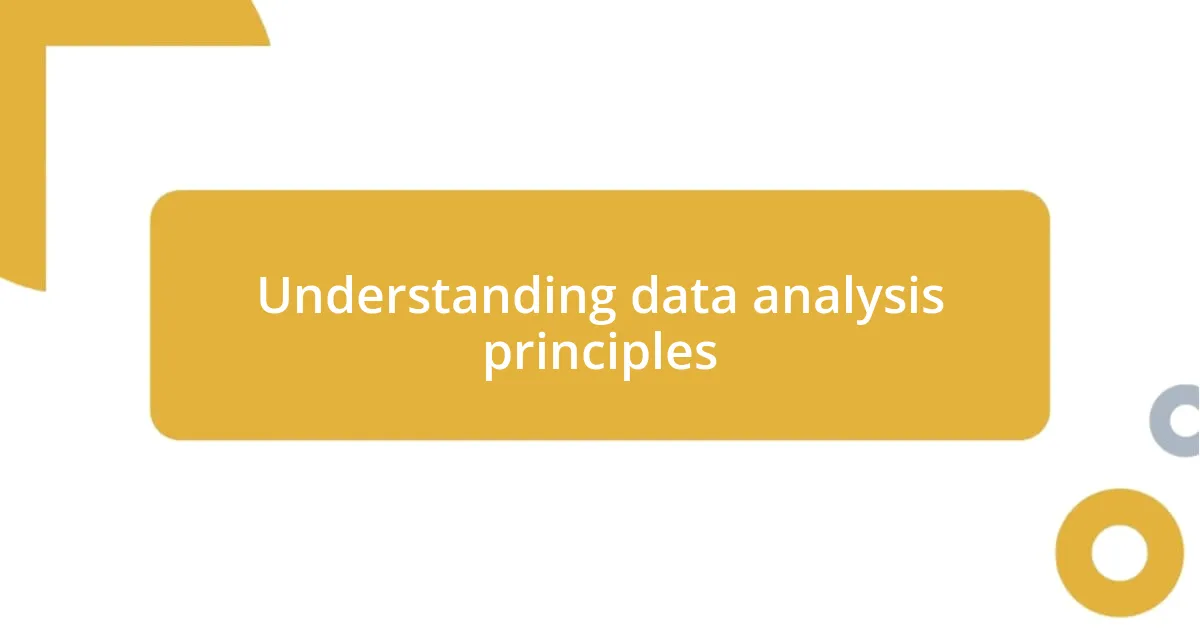
Understanding data analysis principles
Understanding data analysis principles is crucial for anyone diving into this field. I remember a time when I took a deep dive into a dataset that seemed chaotic at first. It was overwhelming, but I soon realized that identifying trends and patterns is like solving a puzzle; once you uncover the underlying structure, everything clicks into place. Does that resonate with you?
One foundational principle is the importance of context. Each dataset has a story to tell, and without understanding the context, you might miss the nuances that drive significant insights. I’ve often found that discussing the data with colleagues not only enriches my perspective but also sheds light on the bigger picture. How often do we overlook valuable insights by focusing solely on numbers rather than considering the narrative behind them?
Finally, let’s consider the iterative nature of data analysis. It’s a process of refining and questioning your findings. I’ve had instances where my first conclusion felt solid, only to realize after further analysis that I had overlooked a crucial variable. Embracing the feedback loop can be uncomfortable, but it ultimately leads to greater accuracy and understanding in your work. Have you experienced similar moments of revelation?
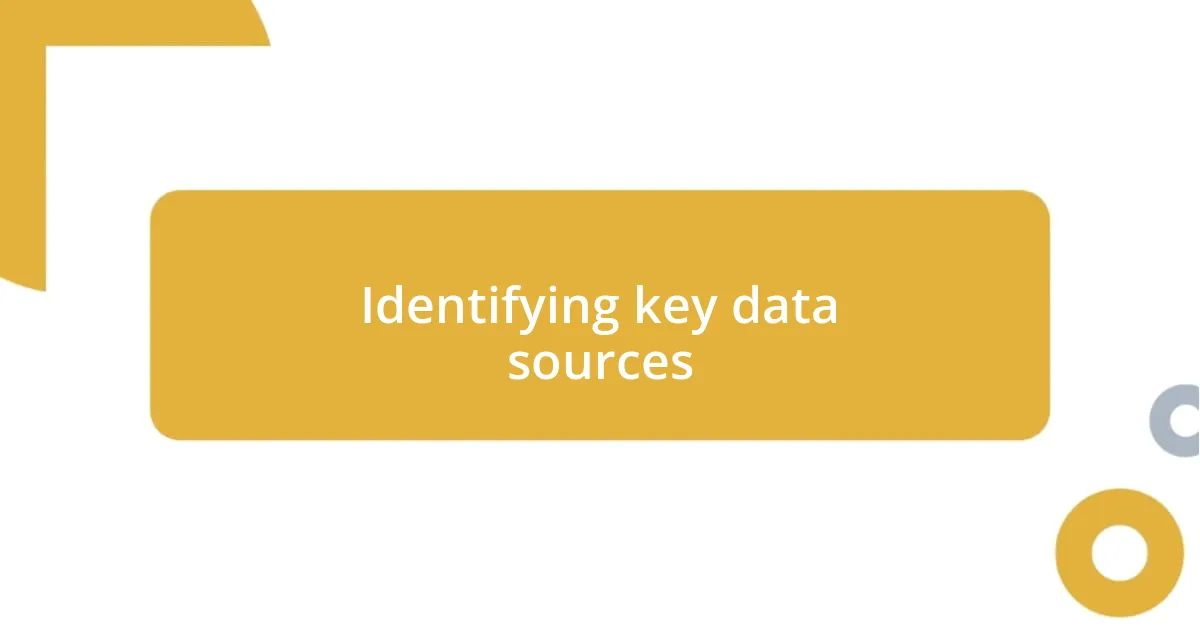
Identifying key data sources
Identifying the right data sources can feel like searching for gold nuggets in a riverbed. I recall a project where I was tasked with improving customer engagement, and, at first, I relied on social media metrics. However, I soon discovered that integrating internal data, such as user behavior and purchase history, opened up a much clearer picture. Sometimes, it’s those less obvious sources that yield the richest insights.
Here are some key data sources to consider:
– Internal Databases: Explore your company’s databases for historical trends and patterns.
– Surveys and Feedback: Collect direct input from customers to understand their preferences and pain points.
– Social Media Analytics: Utilize social platforms’ analytical tools to gauge engagement and sentiment.
– Market Research Reports: Tap into existing studies that offer broader industry insights.
– Open Data Portals: Leverage publicly available datasets from government or research institutions to enrich your analysis.
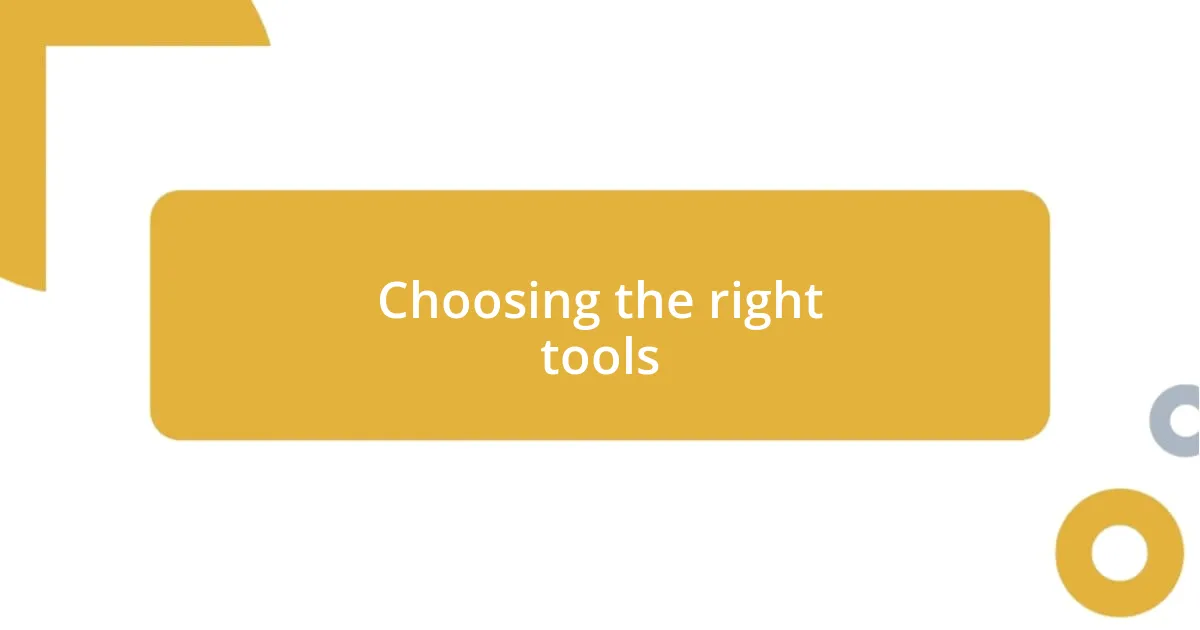
Choosing the right tools
Choosing the right tools can significantly influence your data analysis work. A few years ago, I found myself overwhelmed by numerous software options and approaches. I remember spending days trying various tools before settling on the ones that best matched my style of working. Understanding my own workflow was key—what tools made my analysis smoother and what frustrated me? That self-awareness helped me avoid unnecessary hassle.
I’ve learned that the right tool often depends on the specific project at hand. For instance, when tackling statistical analysis, I’ve gravitated towards R for its robustness and flexibility. However, when I need to visualize data, Tableau’s intuitive interface can turn complex datasets into clear, engaging visuals. This adaptability is crucial; having both strong analytical and visualization capabilities under your belt makes a world of difference.
Here’s a quick comparison of some popular data analysis tools I’ve experimented with. Each has its strengths, and knowing which to use can save time and enhance results:
| Tool | Best For |
|---|---|
| R | Statistical analysis and complex calculations |
| Python (Pandas) | Data manipulation and automation |
| Excel | Basic data analysis and quick calculations |
| Tableau | Data visualization and dashboards |
| Power BI | Business analytics and reporting |
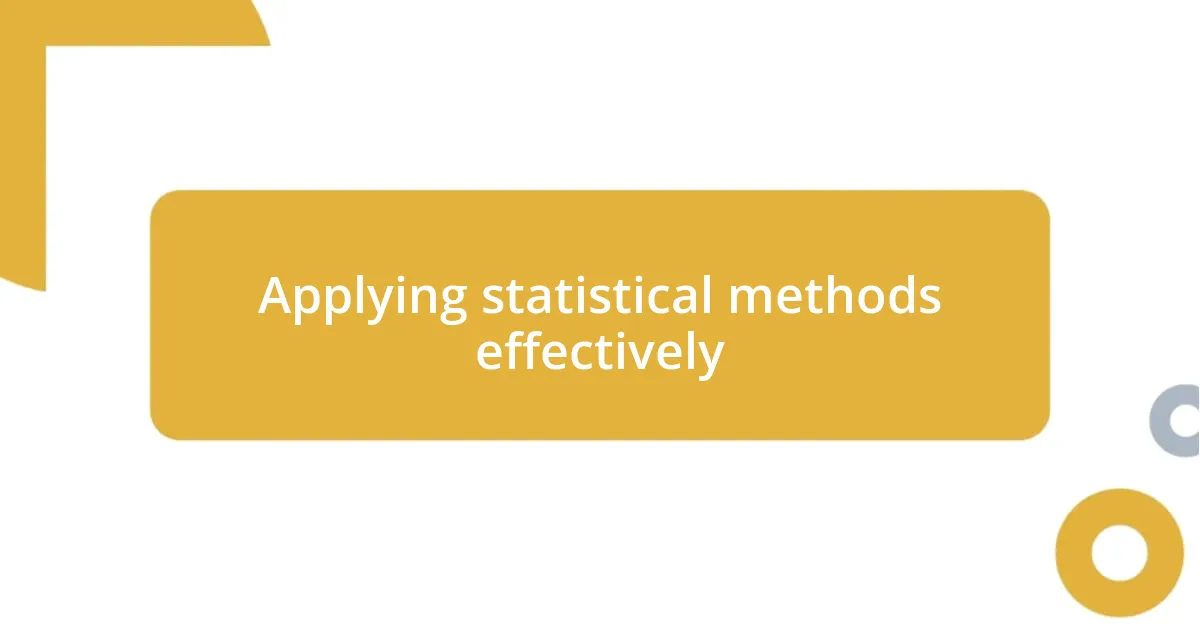
Applying statistical methods effectively
Applying statistical methods effectively requires a strong grasp of the specific techniques that will best address your questions. I remember a time when I was knee-deep in a project involving regression analysis, attempting to uncover relationships between various customer demographics and purchasing behavior. As I poured over the data, I wished I had focused more on testing assumptions, like linearity and multicollinearity, earlier on—trust me, addressing these upfront would have saved me countless hours later.
It’s also vital to interpret your findings in context. One instance that stands out for me was during A/B testing for a marketing campaign. My initial results showed a surprising preference for one variant over the other. But then, I applied segment analysis to dive deeper, revealing that certain demographics reacted differently. It became clear that not all data points matter equally; understanding the ‘why’ behind the numbers can lead to insights that statistics alone might miss.
Moreover, don’t underestimate the power of proper visualization in communicating your results. Early in my career, I created a complex spreadsheet filled with numbers, thinking it would impress my colleagues. Instead, it left them confused. Realizing this, I shifted to visual storytelling; using charts and graphs helped convey my findings more effectively. What I learned is that the best statistical methods not only produce accurate results but also present those results in a way that resonates with the audience.
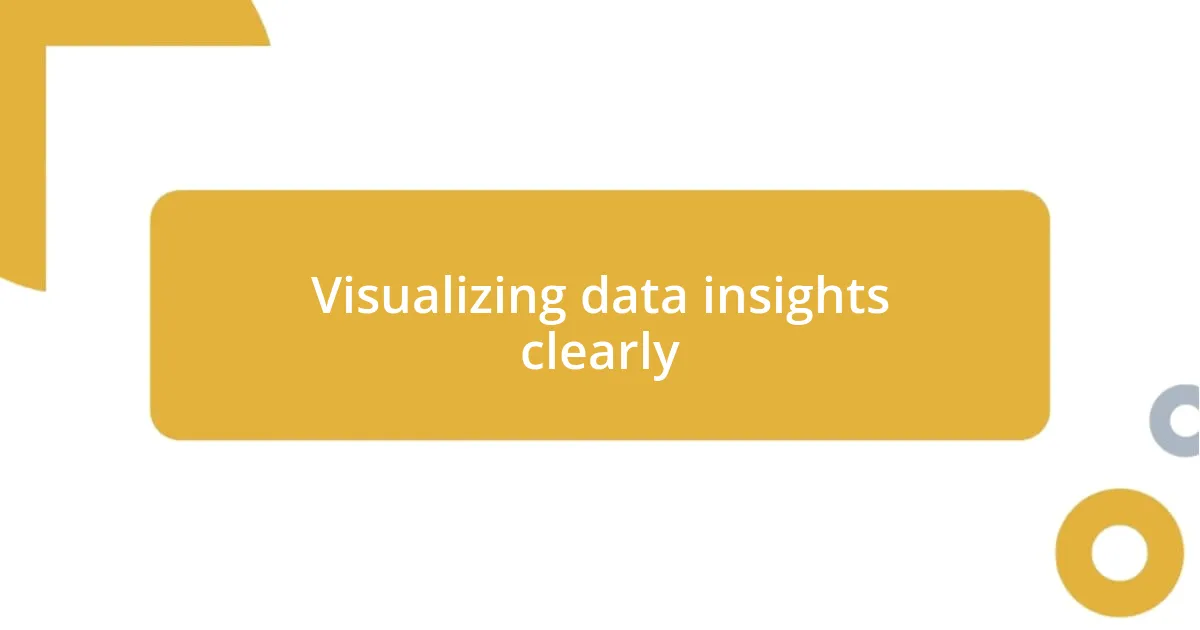
Visualizing data insights clearly
Visualizing data insights is a game-changer in how I communicate my findings. I vividly remember a project where I had pages of analysis that felt significant to me but would have otherwise meant little to my team. I pivoted to crafting vibrant, interactive dashboards that allowed everyone to engage with the data. Suddenly, the story behind the numbers became clear, and I saw lightbulbs go off in their minds as they grasped the insights I was sharing.
In my experience, choosing the right type of visualization can make all the difference. For example, when presenting yearly sales data, a simple line chart instantly clarified trends over time, whereas a pie chart would have muddied the waters. It’s all about considering what you’re trying to convey; I often ask myself, “What’s the simplest way to make this insight pop?” This mindset has saved me from creating overly complex visuals that only cloud understanding.
Finally, I can’t stress enough the importance of storytelling through visuals. Early on, I presented a stunning bar graph that I thought would dazzle my audience. It didn’t. They were lost in the details, unaware of the drive behind those numbers. That taught me the critical lesson of not just showing data but weaving a narrative around it. Today, I try to incorporate elements like annotations and context, guiding the viewer through the visual landscape I create. How effective is your storytelling in visuals?
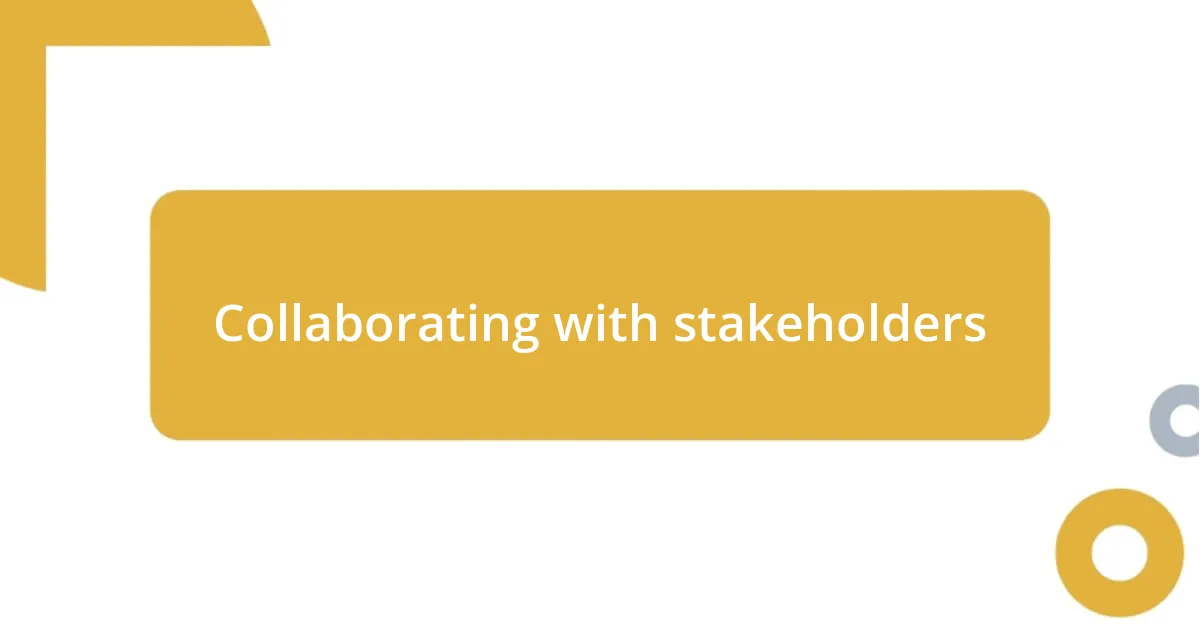
Collaborating with stakeholders
Collaboration with stakeholders is fundamental to effective data analysis. I once worked on a project where I needed to align the analysis with the marketing team’s objectives. Instead of simply presenting my findings, I initiated a workshop where we could brainstorm together, and it was eye-opening. The insights I had gathered took on new dimensions when framed through the stakeholders’ perspectives, leading to a more focused strategy.
Building relationships with stakeholders goes beyond numbers; it’s about understanding their fears and aspirations. For example, during a significant project rollout, one stakeholder voiced concerns over the data’s reliability. I made it a point to walk them through the data cleaning process step by step, highlighting how thorough I had been. This transparency not only alleviated their worries but also strengthened our collaboration. How often do you take the time to deeply connect with your stakeholders’ concerns?
Lastly, communicating regularly is essential. I recall a project where we were developing a dashboard for the sales team. By scheduling weekly check-ins, we could iterate on the design and adapt as their needs shifted. This proactive communication established trust and fostered a sense of joint ownership of the final product. It’s a reminder that the better we understand our stakeholders, the more impactful our data analysis will be. Are you making time to foster such collaborative relationships?
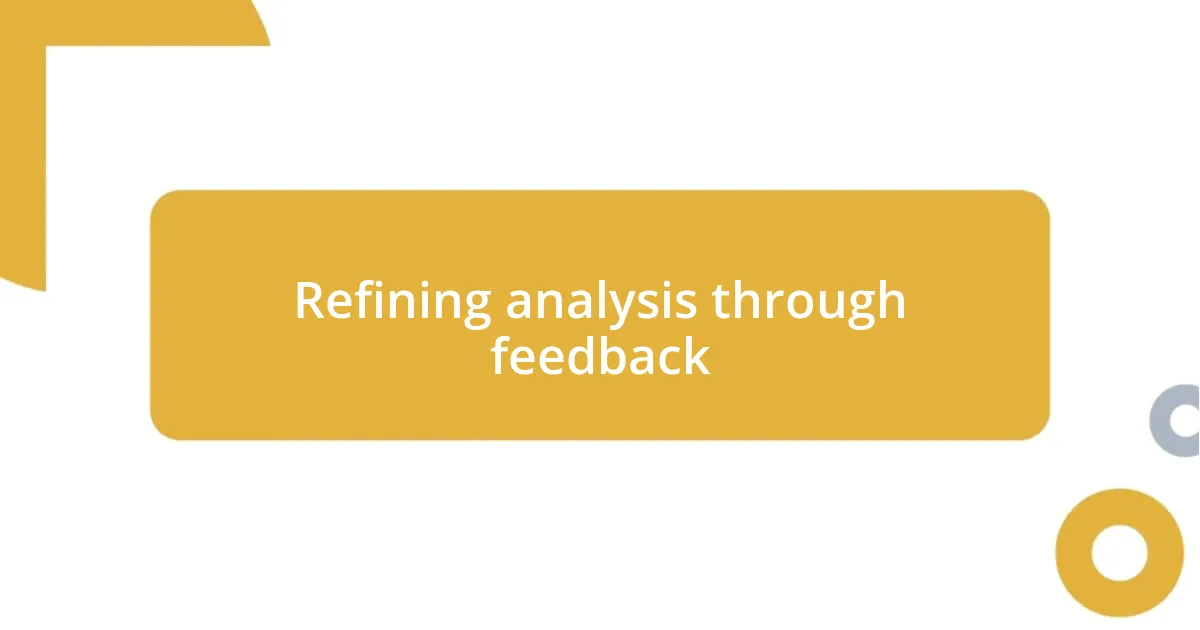
Refining analysis through feedback
Feedback is an invaluable tool in refining my data analysis. I once shared an initial report with colleagues, expecting accolades, yet received constructive critiques instead. While it stung at first, their insights were a goldmine; revisiting my analysis with fresh eyes allowed me to enhance clarity and precision. Have you ever hesitated to seek feedback, only to discover it was just what you needed?
In another instance, I initiated a feedback loop during a complex project, inviting team members to share their thoughts as we went along. I remember how heaving their eyes over my draft made them feel invested and empowered—even if they didn’t directly relate to the data, their perspectives added layers I hadn’t considered. Embracing this iterative process created a sense of shared ownership that transformed our approach.
I’ve learned that receiving feedback isn’t just about the end product; it’s also about fostering a culture of openness. During a heated discussion, a team member pointed out gaps in my assumptions that I had been too entrenched in my analysis to see. It turned out to be a pivotal moment—not just for that analysis, but for strengthening our team’s dynamic. Isn’t it fascinating how open communication can unveil perspectives we would have otherwise overlooked?










